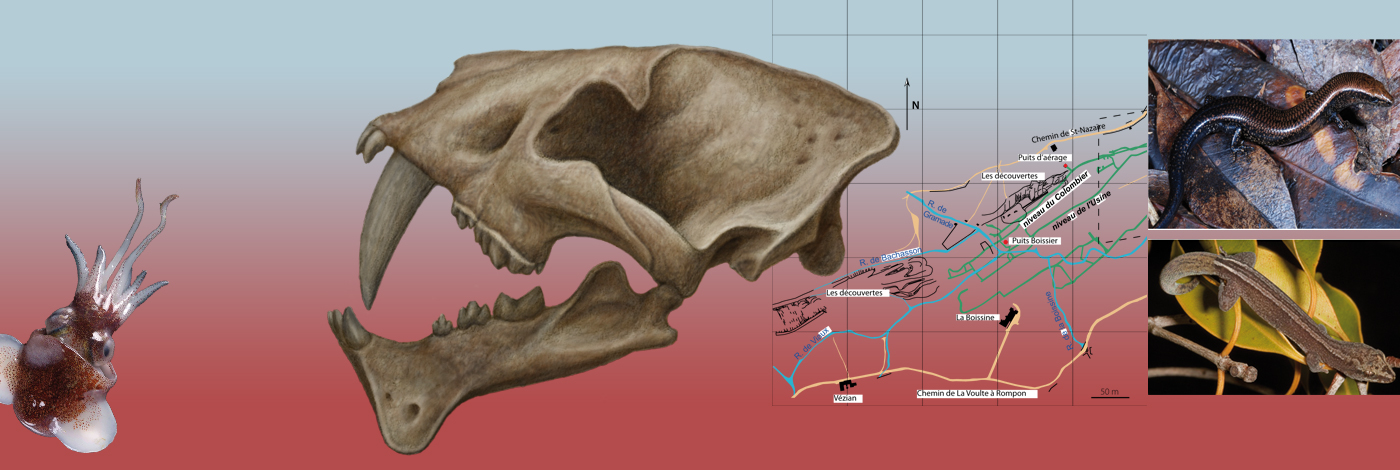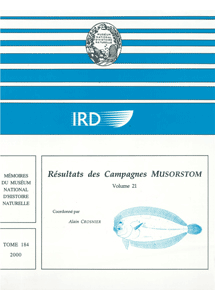
 Volume 184
Volume 184 Published on 30 November 2000
The Résultats des Campagnes MUSORSTOM is an ongoing series on the deep-sea fauna of the tropical Indo-Pacific. Initially focused on the New Caledonian region, the series has now expanded to coyer other South Pacific islands and island groups, in particular Vanuatu, Wallis and Futuna, Fiji and the Marquesas. MUSORSTOM, which depends on an international network of collaborating taxonomists, is currently the most ambitious program of deep-sea zoological exploration. The present volume includes contributions by nineteen authors from Australia, China, Israel, Japan, Russia, USA and Europe, and deals with Hexactinella sponges (2 papers), cirriped and decapod crustaceans (6), pycnogonids (1), comatulid echinoderms (1), ascidians (1), macrourid fishes (1) and flatfishes (1). The results present new data on the morphology, systematics and distribution of 246 species. One order, one new subfamily, nine new genera and 87 new species are described. Amongst the contributions, three are of particular interest. The first is a part of a revision of the Porifera Hexactinellida in the South West Pacific which will be published in three papers. The part published here studies the Amphidiscophora. Of the 19 species collected 12 are new. The second is a study of the balanomorph barnacles of the superfamilies Chionelasmatoidea and Pachylasmatoidea collected in the waters of New Caledonia, Vanuatu and the Wallis and Futuna Islands. Of the 21 species collected, 18 are new to science and 2 are recognized as relictual. The number of new pachylasmatines described represents 46% of the known species and that of the new hexelasmatines 40%; hence our general knowledge of these groups is considerably improved. Wall structure, endemism and species diversity, significance of antenniformy, reproductive state and regression or loss of the penis are discussed. The third is a complete revis ion of a family of crabs, the Palicidae, which was previously rather neglected by taxonomists and ecologists, despite their sometimes frequent occurrence in certain marine environments. The evolution and biological significance of the reduced last pair of pereopods of most species pose difficult problems, and the taxonomy of the family and its position within the Brachyura had received little attention. In a paper of 169 pages, a complete taxonomic revision and a biogeographical review of this family are given. As a result, 43 species are recognized, 17 of which are described as new, and 9 species are synonymized. The feeding habits, locomotion, reproduction and larval development of palicids - which were practically unknown before - are briefly considered. The MUSORSTOM series is a joint program of the Muséum national d’Histoire naturelle and the Institut de Recherche pour le Développement (IRD).
CROSNIER A. (ed.) 2014 — Résultats des Campagnes MUSORSTOM volume 21.Muséum national d'Histoire naturelle, Paris, 813 p. (Mémoires du Muséum national d'Histoire naturelle ; 184).
